From Scraps to Sculpture: The Artistry of Repurposing Soap
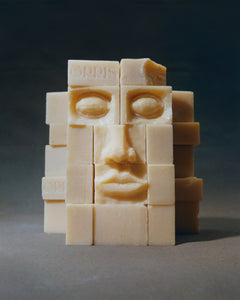
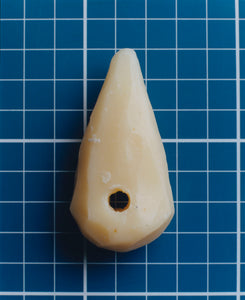
In a unique project aimed at redefining our perception of soap, we transformed imperfect soaps and soap scraps into sculptures to celebrate the inherent beauty of everyday objects.
Collaborating with photographer Jean-Marie Binet, Art Director Mathieu Selvatici and Set Designer César Sebastien, we repurposed ORRIS artisanal soaps into sculptural objects. Our mission was clear: to champion the ORRIS values of creativity, craftsmenship, and waste reduction. By breathing new purpose into these imperfect soap off-cuts, we not only redefine their utilitarian function but elevate them to the status of exquisite objets d'art.
What was your approach to this photoshoot, and from where did you draw your inspiration?
For this artistic ‘carte blanche’, we had the idea of drawing inspiration from archaeology. The study of flowers and plants in the past has played a vital role in shaping our present and our daily lives. Soap waste, a metaphor for sustainability, was used to visually translate Orris' commitment to highlighting the importance of botanical knowledge throughout the ages to create products that respect the environment and our bodies.
Each piece of soap evokes the timeless connection between humans and the natural elements that have shaped our understanding of perfume and beauty over the centuries.
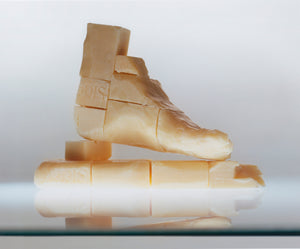
At ORRIS, we adhere to a time-honored tradition by employing the cold process saponification method and allowing our soap bars to mature for a minimum of six weeks. In turn, this allows for the development of a complex molecular structure in our soaps, akin to the intricate craftsmanship of wine and cheese making that is steeped in French tradition. As a result, our soaps develop a richer lather, last longer in your shower, and become gentler on your skin.
It's a craft that requires patience and expertise, resulting in soap bars that are as beautiful as they are functional. Our skilled artisans cut, pour, and stamp each soap by hand in the South of France. It is a rare and labor-intensive process, one we believe stands apart from most industrial methods used to manufacture other bar soaps on the market. However, this process, while yielding beautifully handcrafted bars of soap, also presents challenges, one of which is the generation of offcuts or soap scraps. These offcuts are remnants that remain after the soap is poured into molds and cut into individual bars. The wastage occurs because achieving perfectly uniform bars from every batch can be a tricky feat.
How do you see this project fitting into the broader conversation about art and sustainability?
Our artistic approach, inspired by archaeology, reveals the deep and intimate history between man and nature. By photographing our products as pieces of art, we honor the ancient study of flowers and plants, a science that has sculpted our present and shaped our daily lives.
Soap waste was used during this shoot as a metaphor for sustainability. They evoke an eternal connection between humanity and the natural elements, highlighting the importance of preserving our harmony with nature in our continual quest for fragrance and beauty.
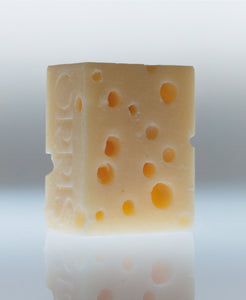
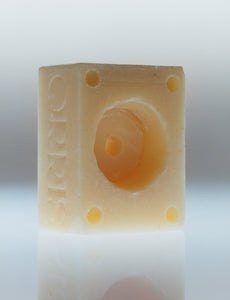
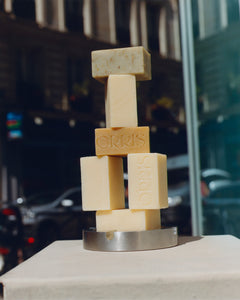

Credits:
Art Direction
Mathieu Selvatici
Photography
Jean-Marie Binet
Set Design
César Sebastien
